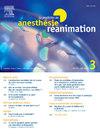Retour d’expérience sur la mise en place de la péridurale déambulatoire dans une maternité de niveau 3
Q4 Nursing
引用次数: 0
Abstract
Cet article explique la mise en place de l’analgésie péridurale ambulatoire dans une maternité de niveau 3. Elle passe par une phase d’explication auprès des soignants et de sélection des parturientes qui en bénéficieront a priori et qui recevront des explications détaillées sur la procédure. Le protocole d’analgésie est modifié pour tenir compte de l’ambulation et minimiser les effets secondaires. Le premier lever doit être encadré pour éviter les conséquences d’un bloc moteur ou d’une hypotension orthostatique. L’expérience acquise avec 100 parturientes montre qu’elles choisissent l’ambulation si elles en ont les critères et qu’elles apprécient la possibilité d’avoir recours à ce choix mais qu’elles ne l’exploitent pas durant toute la durée du travail même si elles en sont satisfaites.
This article explains the implementation of ambulatory epidural analgesia in a level 3 maternity ward. It goes through a phase of explanation to caregivers and selection of parturients who will benefit from it a priori and who will receive detailed explanations on the procedure. The epidural analgesia protocol is modified to take into account ambulation and minimize side effects. The first rise must be supervised to avoid the consequences of a motor block or orthostatic hypotension. Experience concerning one hundred parturients shows that they choose ambulation if they have the criteria and that they appreciate the possibility of having recourse to this choice but that they do not exploit it throughout the duration of labor even if they are satisfied with it.
3级产妇实施硬膜外行走的经验反馈
这篇文章解释了门诊硬膜外镇痛在三级产妇中的实施。这包括向护理人员解释和选择将受益于这一过程的孕妇,并向她们提供关于这一过程的详细解释。对止痛方案进行了修改,以考虑到急诊和最小化副作用。第一个升降机必须有框架,以避免运动阻滞或正畸低血压的后果。对100名分娩妇女的经验表明,她们在符合条件的情况下选择救护车,并重视使用这种选择的可能性,但即使她们感到满意,她们也不会在整个分娩过程中使用这种选择。这篇文章解释了3级妇产病房门诊硬膜外麻醉的实施。它要经过一个向护理人员解释的阶段,并选择将受益于它的产科医生,他们将接受关于手术过程的详细解释。对硬膜外镇痛方案进行了修改,以考虑到门诊和尽量减少副作用。第一次隆起必须监督,以避免运动阻滞或正畸低血压的后果。100名分娩者的经验表明,如果他们有标准,他们会选择救护车,他们欣赏使用这种选择的可能性,但即使他们对这种选择感到满意,他们也不会在整个分娩过程中使用这种选择。
本文章由计算机程序翻译,如有差异,请以英文原文为准。
求助全文
约1分钟内获得全文
求助全文
来源期刊

Praticien en Anesthesie Reanimation
Medicine-Anesthesiology and Pain Medicine
CiteScore
0.10
自引率
0.00%
发文量
61
审稿时长
51 days
期刊介绍:
Conçu et élaboré pour la formation médicale continue des anesthésistes réanimateurs, Le Praticien en anesthésie réanimation répond à des objectifs clairement définis. - Être au plus près de votre quotidien : la revue vous apporte des réponses immédiatement opérationnelles aux problèmes rencontrés dans votre exercice.
 求助内容:
求助内容: 应助结果提醒方式:
应助结果提醒方式:


